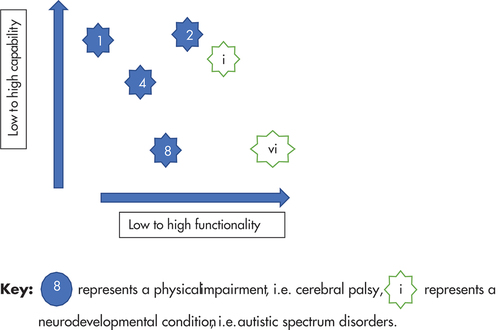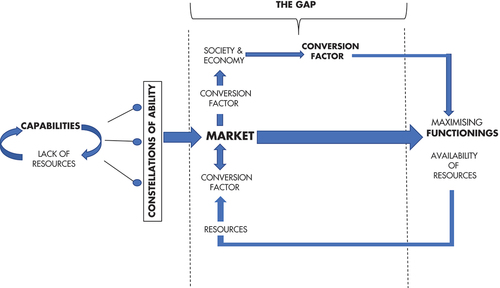Figures & data
Table 1. Further models of disability.
Table 2. PWD models based upon individual rights.
Figure 1. A constellation of ability.
The figure represents a constellation of ability axis. To the vertical there is low to high capability, and to the horizontal there is low to high functionality. The figure represents some examples of physical impairment, in the form of a star, against capability and functionality. For example, cerebral palsy may be plotted as low on the functionality axis and slightly higher on the capability axis. A neurodevelopmental condition may be plotted as very high on the functionality axis, yet low on the capability axis.
Source: Authors.

Figure 2. Closing the gap – the market as conversion factor.
Fig 2 represents a model of the market as a potential conversion factor. To the extreme left of the image there is an image of a loop showing the capabilities and lack of resources. The constellations of ability (as shown in figure 1) feeds into the market. There is an arrow from constellations of ability pointing towards the market. From the market there emerges an arrow above and below indicating ‘conversion factor’. This conversion factor feeds into society and the economy, ultimately resulting in a maximisation of functionings though the availability of resources, thus minimising the gap - as depicted at the top of the model.
Source: Authors.

